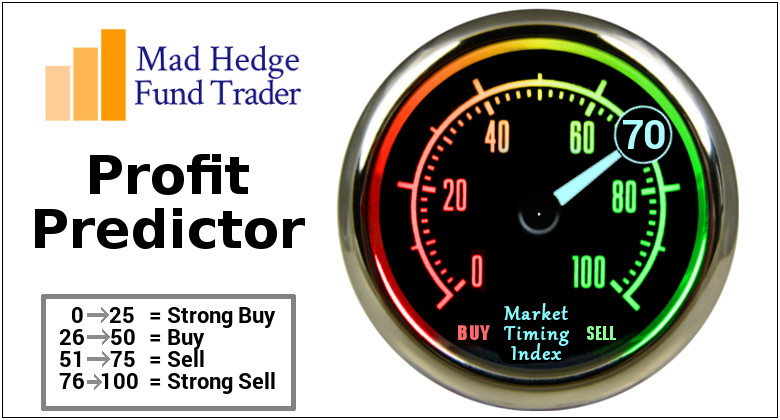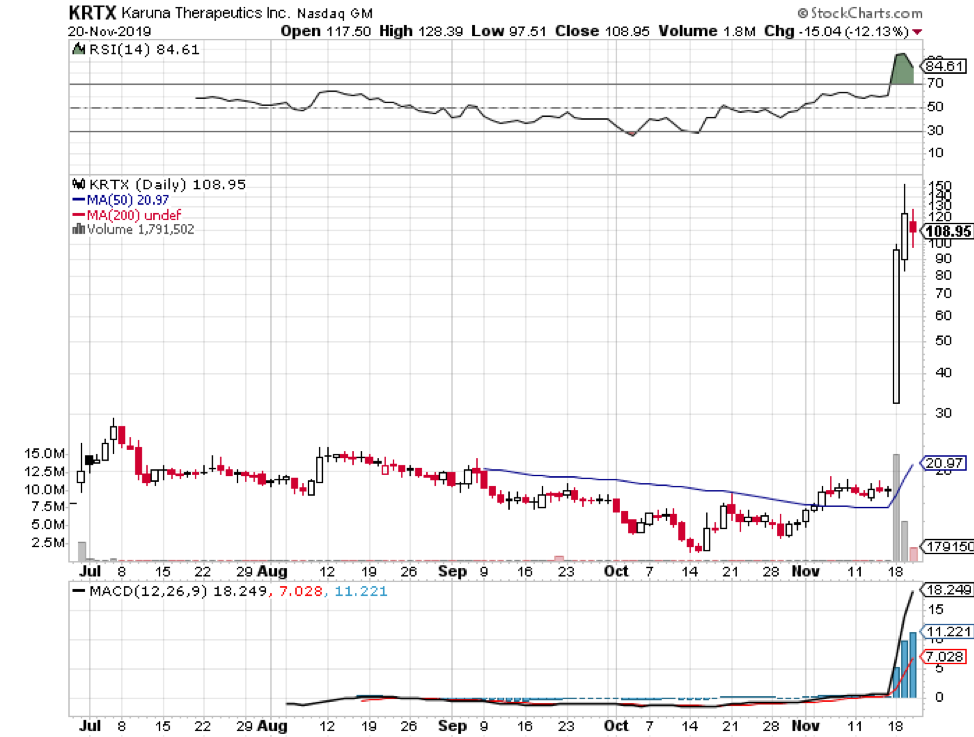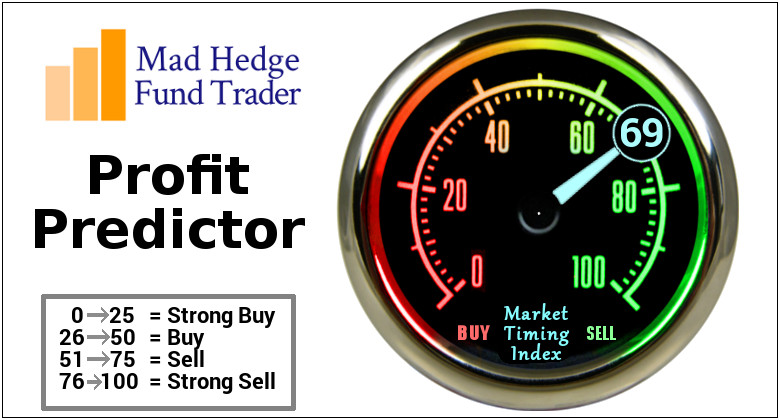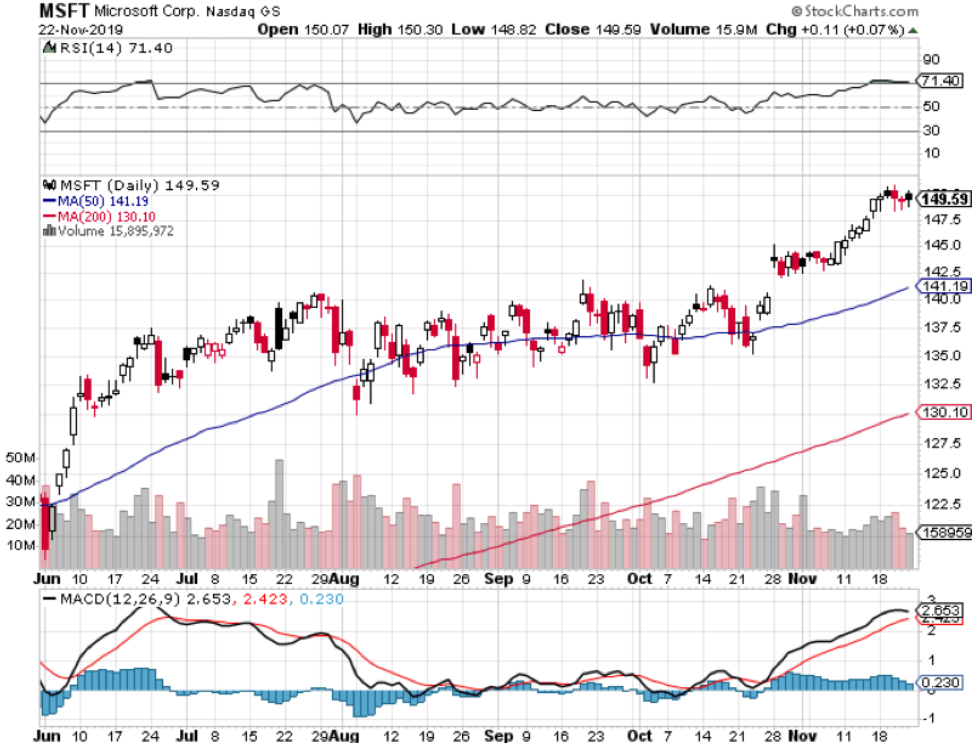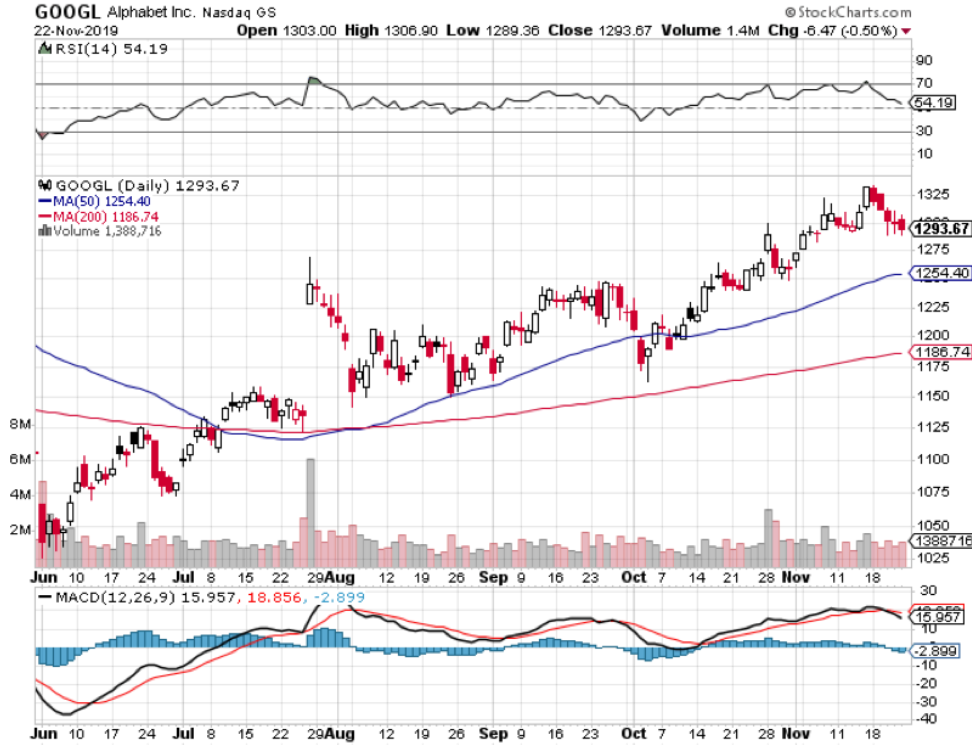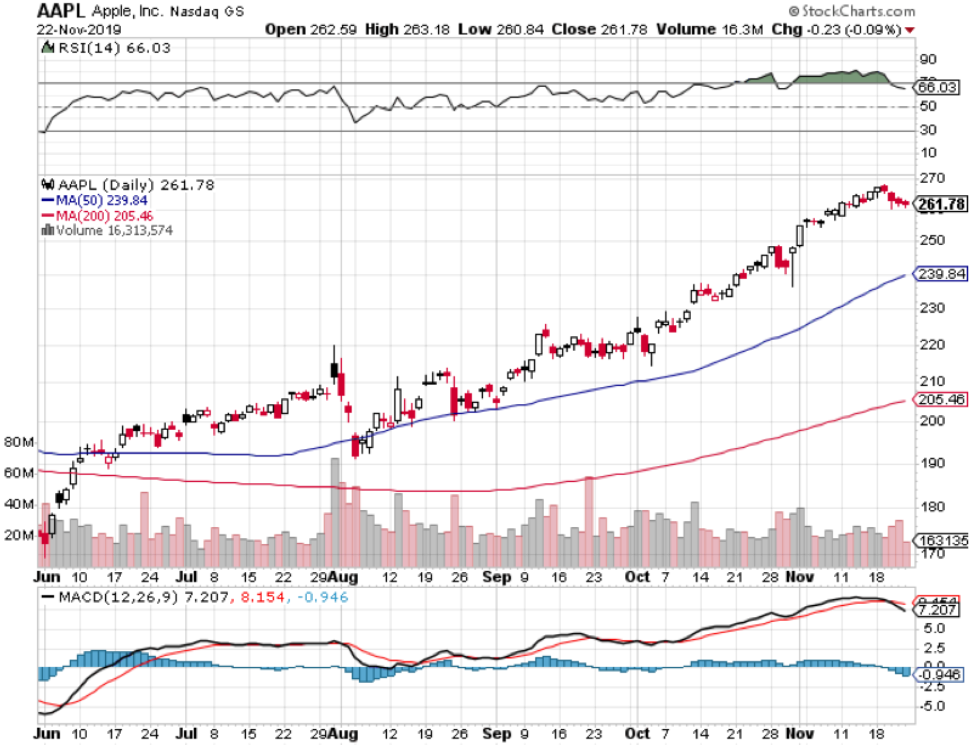While the Diary of a Mad Hedge Fund Trader focuses on investment over a one week to a six-month time frame, Mad Day Trader, provided by Bill Davis, will exploit money-making opportunities over a brief ten minute to three-day window. It is ideally suited for day traders, but can also be used by long-term investors to improve market timing for entry and exit points. Read more
Mad Hedge Biotech & Healthcare Letter
November 26, 2019
Fiat Lux
Featured Trade:
(WHY KARUNA THERAPEUTICS IS THE BIG ONE THAT GOT AWAY),
(KRTX)
In many respects, buying the shares of small biotech companies is a lot like purchasing lottery tickets. Look no further than Karuna Therapeutics (KRTX), which has just soared sevenfold on the back of wildly successful phase II trials for its schizophrenia drug KarXT.
While it is too late to buy (KRTX), it is illustrative of what is going on in the space with ever-increasing frequency. And the great news for you and me is that biotech is only months into a meteoric move that could last for decades.
KarXT is the next “gamechanger” in the field of schizophrenia. Why is this important? In the United States alone, schizophrenia already affects roughly 2.7 million people or almost 1% of the population. Needless to say, this condition makes handling relationships and maintaining jobs virtually impossible.
With its tendency to become a recurring condition as one of its key defining features, schizophrenics need recurring treatment as well. To make matters worse, the conditions are distinct from one patient to another. Hence, it no longer comes as a surprise that over a third of people afflicted by this condition do not respond to the antipsychotic treatments available in the market today.
As for the treatments that do take effect, the side effects associated with the drugs also hinder the day-to-day activities of the patients causing them to discontinue taking it altogether. Currently, one of the most popular antipsychotic drugs used to treat schizophrenics is Johnson and Johnson’s (JNJ) Invega Sustenna. Based on its 2019 revenues so far, the drug is projected to be on pace to hit the projected sales of $3.3 billion by the fourth quarter.
In comparison, Karuna’s KarXT functions on muscarinic receptors that respond to acetylcholine, which is basically an organic chemical found in the brain. Meanwhile, JNJ’s drugs focus on dopamine and serotonin receptors. This primary difference between the two drugs puts Karuna’s drug on the lead. However, Karuna is not the first in looking into muscarinic receptors. In 2016, Allergan (AGN) paid Heptares Therapeutics $3.3 billion in an effort to license drugs similar to KarXT.
What really inspired excitement though is the tolerability of KarXT. Since the majority of antipsychotic drugs on the market today are notorious for their adverse effects, Karuna’s drug achieved a discontinuation rate of only 20% -- an impressive result considering that the placebo group had a 21% discontinuation rate. More impressively, KarXT users did not experience any of the commonly feared side effects like weight gain or drowsiness.
Aside from schizophrenia, Karuna is also looking into ways to use KarXT as a treatment option for other CNS disorders that can offer none of the debilitating side effects of current antipsychotic drugs. This could cover treatments for Alzheimer’s disease and even for pain management.
Following this exciting revelation, Karuna announced its intention to conduct a public offering of 2.6 million shares in an effort to raise additional capital. All things considered, the small biotech company has been moving at a notable pace. Just last June, this PureTech-backed company opened with a $75 million IPO -- a humongous jump from its initial price point of $42 million.
So far, the companies competing in the same space as Karuna are Novus Biologicals, Anavex, and TheraVida.
The next important step for Karuna is its meeting with the FDA in the second quarter of 2020, which is anticipated to push KarXT to Phase 3 of its clinical trial. If all goes well, this phase will be launched in the latter part of 2020.
Volatility is always to be expected particularly when investing in biotech companies. Karuna’s amazing news demonstrates why volatility can sometimes be a good thing. Although there are more trials and testing to be performed, the results of KarXT’s study should put Karuna on the hot list of biotech investors.
While this one got away, the Mad Hedge Biotechnology and Healthcare letter has a long list of letters coming promising similar potential.
Global Market Comments
November 26, 2019
Fiat Lux
Featured Trade:
(WHAT HAPPENED TO THE DOW?)
($INDU), (EK), (S), (BS), (CVX), (DD), (MMM),
(FBHS), (MGDDY), (FL), (GE), (TSLA), (GM)
(WHY YOUR OTHER INVESTMENT NEWSLETTER IS SO DANGEROUS)
While the Diary of a Mad Hedge Fund Trader focuses on investment over a one week to a six-month time frame, Mad Day Trader, provided by Bill Davis, will exploit money-making opportunities over a brief ten minute to three-day window. It is ideally suited for day traders, but can also be used by long-term investors to improve market timing for entry and exit points. Read more
Mad Hedge Technology Letter
November 25, 2019
Fiat Lux
Featured Trade:
(AI HAS REACHED FARTHER THAN YOU THINK),
(AMZN), (MSFT), (AAPL)
I was lucky enough to get my hands on the Deloitte Private Technology Trends report named, “Seizing Opportunity.”
I’ll break down some of the gems I took away that will give us insight into the current state of technology.
This might not be necessarily a new idea because artificial intelligence has been around for a while, but it certainly is gaining steam with respondents placing greater value on artificial intelligence to drive business results.
Firms are using AI for analysis automation 48% of the time in 2019 versus 30% in 2018, putting the responsibility on this technology to super-drive profits.
It’s not a surprise that big data analysts have become one of the most sought-after commodities in Silicon Valley.
It’s appropriate to say that the FANGs have pulled away from any resemblance of competition in 2019 and this if forcing many mid-market and private companies to view talent and emerging technologies as the x-factors to stay competitive.
Behemoth tech companies have the luxury of cheap access to capital to buy out competition or break it by throwing money at problems until they can copy the technology and scale it applying force multiplier ecosystems to cross-pollinate and intertwine services with each other.
These same companies buy back their own stock with cheap capital enriching stakeholders and management.
In fact, Apple (AAPL) is buying back so much stock that it will have bought out its entire trove of stock by 2030 to effectively go private.
Deloitte found that 43% say they are spending more than 5% of their firm’s revenue on technology, a 15-point increase since 2016.
More than half of respondents forecast annual growth rates of 11% or higher and 68% plan to hire to harness the emerging technology.
Another trend that will pick up steam that I have noted before is the predictive analytics and legacy system modernization, and this is topping private companies’ investment priorities list.
In fact, the number of private companies surveyed using predictive analytics to diagnose business results skyrocketed 65% over the past five years.
Firms are prioritizing information security risks, the adoption of 5G technology, and business innovation over the next 365 days.
Digital disruption is the norm du jour.
Firms expect shifts in sales (55%), marketing (50%), and supply chain roles (49%) in the next 3-5 years.
In preparation, 54% of mid-market and private companies are re-skilling employees and 52% are reconfiguring jobs to accommodate this shift.
Also, 72% believe internal development and reskilling is a method to enhance employees’ potential because of the exorbitant costs of talent acquisition.
Over two-thirds (69%) will construct new talent acquisition strategies to marry it up with the trend of hiring in data analytics, AI and other emerging technologies.
In a major reversal, respondents are less likely to seek out crowdsourcing and gig economy workers because these types of workers are less effective than full-time workers and have high turnover rates.
More than 32% of private companies acknowledge that embedded value is trending towards machine learning, robotic process automation and other cognitive capabilities, a 12% increase from 2018’s survey results.
Although executives are experiencing greater benefits from AI technologies, more than one-half of respondents (55%) are worried about the use of AI, particularly when it comes to HR decision-making.
Personally, I believe using AI in HR is mostly flawed.
In short, firms are doubling down on “emerging technologies” and to combat the superior business models of big tech companies.
They almost have no choice.
These conditions favor the status quo of behemoth tech titans who can invest in machine learning and artificial intelligence because of their cheap sources of capital.
From the data, smaller companies are desperate to hang on to their talent because of a shrinking talent pool and high talent acquisition cost.
The belief that leveraging foundational technologies to springboard revenue is only getting stronger. This favors the goliaths at the top because they have the resources to integrate these levers unlike companies further down the food chain.
This article could almost signal why investors can’t be short Apple (AAPL), Microsoft (MSFT), and Google (GOOGL).
They are at the vanguard of every major technology trend and they have demonstrated that they are definitely “seizing opportunity.”
“The rise of extreme inequality both within nations and between nations that is being turbocharged by globalization and technology (is one of the biggest risks for young people).” - Said former President of the United States Barack Obama at Salesforce.com Inc.’s annual Dreamforce Conference in San Francisco.
Global Market Comments
November 25, 2019
Fiat Lux
Featured Trade:
(MARKET OUTLOOK FOR THE WEEK AHEAD, or CATCHING OUR BREATH),
(MSFT), (GOOGL), (TLT), (VIX), (TSLA)
While the Diary of a Mad Hedge Fund Trader focuses on investment over a one week to a six-month time frame, Mad Day Trader, provided by Bill Davis, will exploit money-making opportunities over a brief ten minute to three-day window. It is ideally suited for day traders, but can also be used by long-term investors to improve market timing for entry and exit points. Read more
Legal Disclaimer
There is a very high degree of risk involved in trading. Past results are not indicative of future returns. MadHedgeFundTrader.com and all individuals affiliated with this site assume no responsibilities for your trading and investment results. The indicators, strategies, columns, articles and all other features are for educational purposes only and should not be construed as investment advice. Information for futures trading observations are obtained from sources believed to be reliable, but we do not warrant its completeness or accuracy, or warrant any results from the use of the information. Your use of the trading observations is entirely at your own risk and it is your sole responsibility to evaluate the accuracy, completeness and usefulness of the information. You must assess the risk of any trade with your broker and make your own independent decisions regarding any securities mentioned herein. Affiliates of MadHedgeFundTrader.com may have a position or effect transactions in the securities described herein (or options thereon) and/or otherwise employ trading strategies that may be consistent or inconsistent with the provided strategies.

